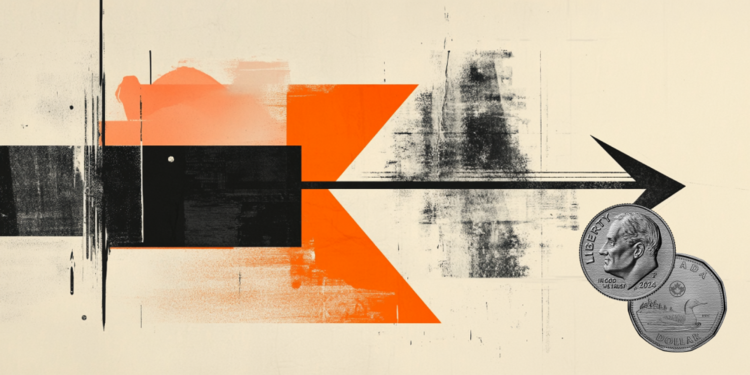- The Canadian Dollar weakens for a sixth consecutive day, with USD/CAD hitting its highest level since late May.
- US President Donald Trump threatens 35% tariffs on Canadian goods not covered under USMCA if no deal is reached by August 1.
- Canadian GDP contracts 0.1% MoM in May, marking the second straight monthly decline.
The Canadian Dollar (CAD) remains on the back foot for a sixth straight day against the US Dollar (USD) on Thursday, sinking to its weakest level since late May. At the time of writing, the USD/CAD pair is trading flat around 1.3834 during early American trading hours, hovering near a fresh two-month high amid sustained Greenback strength and cautious risk sentiment ahead of the August 1 tariff deadline.
US President Donald Trump took shots at Canada once again on Thursday, warning that new tariffs will hit Canadian goods if no trade deal is finalized by August 1. Trump’s comments came after Canada backed Palestinian statehood, a move that he said “makes a deal very hard.” The proposed tariffs would include a 35% tax on Canadian exports not covered under the USMCA, with even steeper rates expected on key goods such as copper and pharmaceuticals. While trade talks between the two countries are ongoing, Canadian Prime Minister Mark Carney admitted that progress is slow and a comprehensive agreement before the deadline appears unlikely.
Statistics Canada reported on Thursday that the Canadian economy contracted by -0.1% in May, as measured by Gross Domestic Product (GDP), matching market expectations and marking a second consecutive monthly decline, as goods-producing industries declined while services-producing industries were essentially unchanged. The data comes just a day after the Bank of Canada (BoC) decided to keep its policy interest rate unchanged at 2.75%. While the central bank noted that overall inflation is close to its 2% target, it also pointed to ongoing underlying inflation pressures and growing uncertainty tied to US trade policy and rising global tensions. BoC Governor Tiff Macklem struck a cautious tone, saying more rate cuts are on the table if the economy continues to soften and trade-related price spikes stay under control.
On the US side, data released by the US Bureau of Economic Analysis added further support to the Greenback. The core Personal Consumption Expenditures (PCE) Price Index, the Federal Reserve’s preferred inflation gauge, rose 0.3% MoM in June, matching forecasts and accelerating from the previous 0.2%. On a yearly basis, core PCE held steady at 2.8%, slightly above the 2.7% expected. Meanwhile, the headline PCE Price Index also climbed 0.3% MoM and 2.6% YoY, both beating expectations, pointing to sticky underlying price pressures.
Personal Spending rose 0.3% MoM in June, slightly below expectations of 0.4% but still marking a strong rebound from the 0.1% decline in May. Meanwhile, Personal Income increased by 0.3%, beating forecasts of 0.2% and recovering sharply from the 0.4% drop in the prior month. In addition, the Initial Jobless Claims for the week came in at 218K, slightly below expectations of 224K, pointing to a still-tight labor market.
Read the full article here


